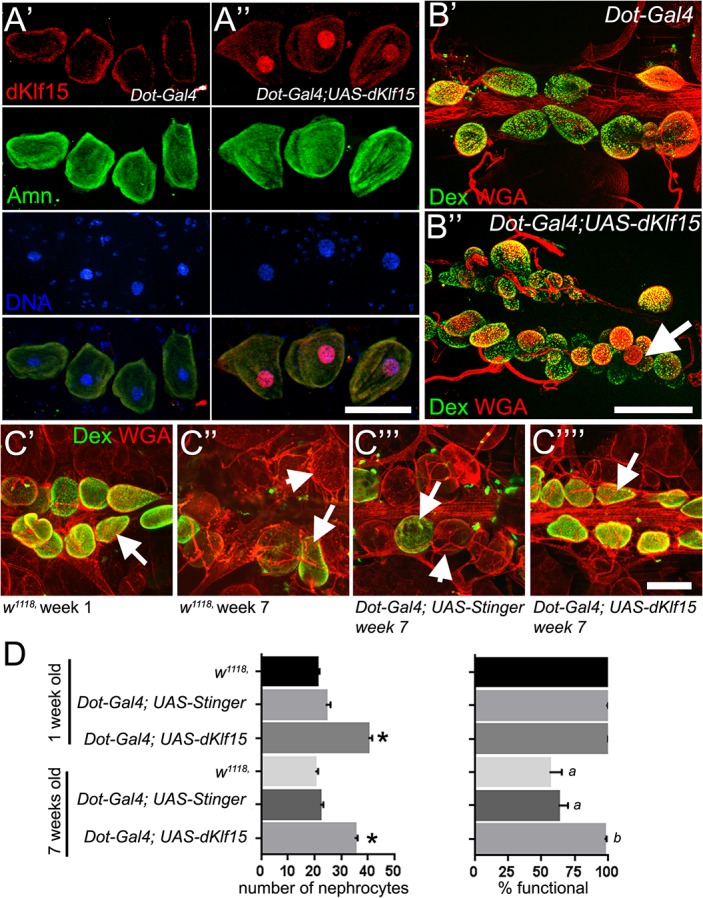Fig 7. dKlf15 overexpression increases the number of functional nephrocytes in adults and prevents age-dependent nephrocyte dysfunction.

(A) Pericardial nephrocytes from control (progeny of Dot-Gal4 outcrossed to w 1118; A’) and dKlf15 over-expressing flies (Dot-Gal4; UAS-dKlf15; A”) stained with anti-dKlf15 (1:100) and anti-Amnionless antibodies (1:100). Scale bar = 50 μm. (B’) Pericardial nephrocytes from control (progeny of Dot-Gal4 outcrossed to w 1118; B’) and dKlf15 over-expressing flies (Dot-Gal4; UAS-dKlf15; B”) incubated with 10 kDa dextran and wheat germ agglutinin (to label cell surfaces). Arrow indicates a group of smaller nephrocytes. Scale bar = 80 μm. (C’-C”“) Nephrocytes from one and seven-week-old flies, incubated with 10 kDa dextran (green) and wheat germ agglutinin (red). Arrows indicate nephrocytes that have accumulated dextran; arrowheads identify nephrocytes that have not accumulated dextran. (D) Quantification of nephrocyte numbers and the proportion which were functional as determined by their ability to bind dextran. *P<0.001 compared to wild type and control; a P<0.001 compared to one-week-old wild type and control; b P<0.001 compared to seven-week-old wild type and control; n = 8–12 flies per genotype / per time-point.
